Welcome to what might become your new favorite Sunday dinner. If you’ve been searching for an impressive yet economical beef dish, this bottom round roast recipe deserves your full attention. Despite being one of the more affordable cuts, when prepared correctly, a beef bottom round roast transforms into something truly spectacular – tender, juicy, and bursting with flavor.
Many home cooks shy away from larger cuts like bottom round roast, fearing they’ll end up with something tough or dry. This recipe eliminates those concerns with a foolproof method that delivers restaurant-quality results every time. Whether you’re cooking for a special occasion or simply elevating your weekly meal prep, mastering this bottom round roast recipe will revolutionize your beef game.
Table of Content
- What is a Bottom Round Roast?
- Why This Bottom Round Roast Recipe is Exceptional
- Ingredients Needed for Your Bottom Round Roast Recipe
- How to Cook a Bottom Round Roast
- Expert Tips for Perfecting Your Bottom Round Roast Recipe
- Storage Instructions
- Frequently Asked Questions
- Nutrition Information (per serving, based on 8 servings)
- Other Impressive Beef Recipes
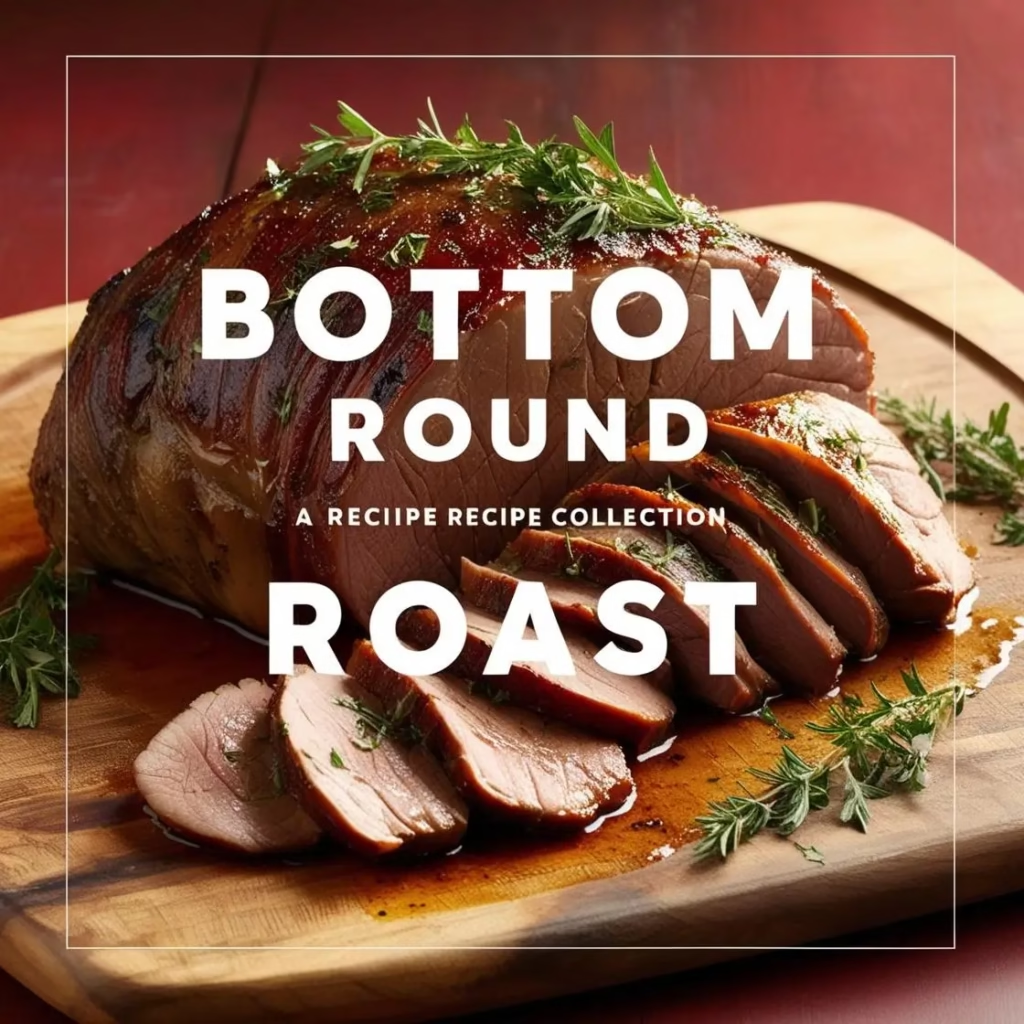
What is a Bottom Round Roast?
Before diving into the cooking method, let’s understand what makes this cut unique. A beef bottom round roast comes from the rear leg area of the cow, specifically the outside muscle of the upper leg. This working muscle develops exceptional flavor but can be slightly less tender than premium cuts like ribeye or tenderloin.
What makes bottom round roast special is its impressive flavor-to-cost ratio. With the proper cooking technique, you can transform this economical cut into a meal that tastes decidedly luxurious. If you can’t find a bottom round roast specifically, suitable substitutes include round rump roast or eye of round, though each has slightly different characteristics that may affect cooking time.
Why This Bottom Round Roast Recipe is Exceptional
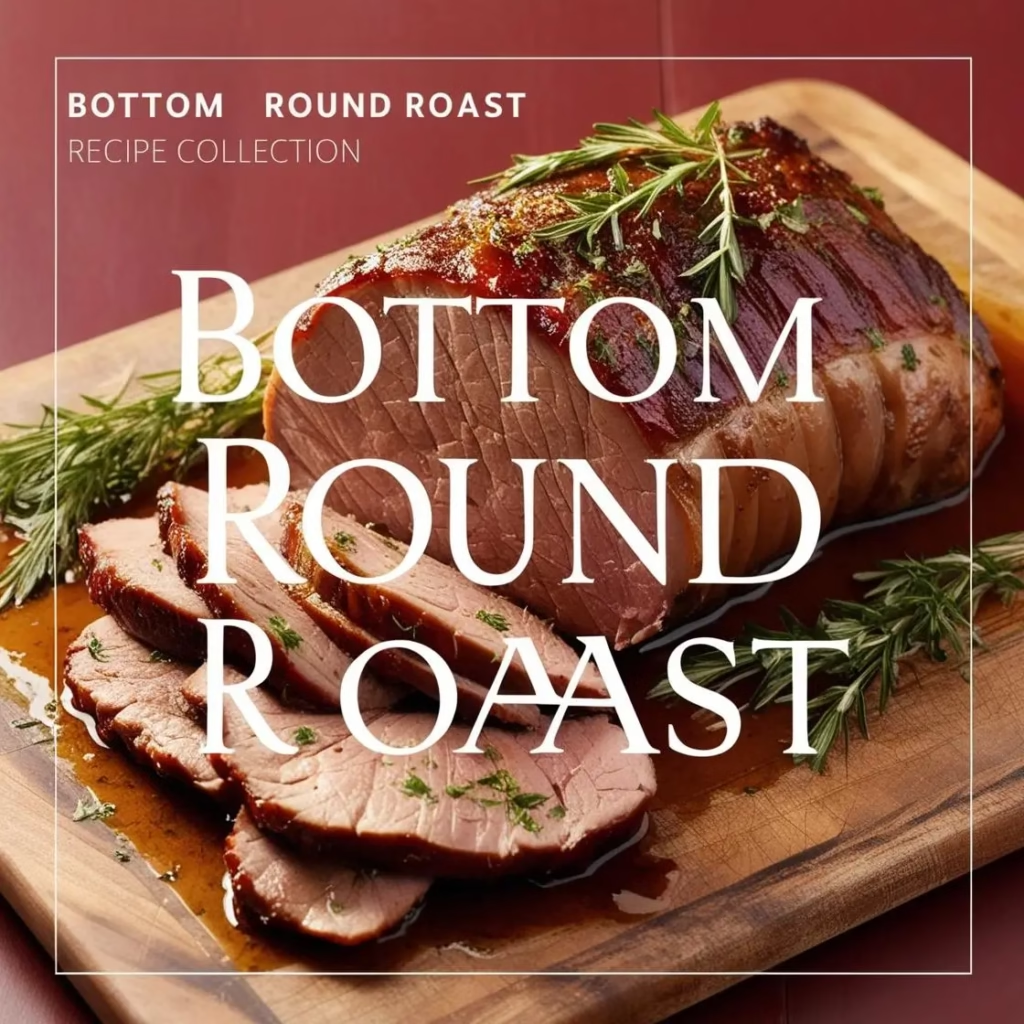
Three things make this recipe stand out from others you might have tried:
Simple ingredients: This recipe relies on quality basics rather than complicated components. The straightforward seasoning blend enhances the natural beef flavor without overwhelming it. When working with a flavorful cut like beef bottom round roast, sometimes less truly is more.
Restaurant-quality results: Despite its simplicity, this method delivers a bottom round roast that rivals what you’d pay three times more for at a steakhouse. The contrast between the herb-crusted exterior and the perfectly cooked interior creates a dining experience worth sharing.
SO easy: Even if you’ve never tackled a large beef roast before, this recipe breaks the process down into manageable steps. The technique accommodates various skill levels while delivering consistent results every time.
Ingredients Needed for Your Bottom Round Roast Recipe
To create this impressive centerpiece, you’ll need:
- 3-4 pound beef bottom round roast
- 4 tablespoons unsalted butter, softened
- 3 cloves garlic, minced
- 1 tablespoon fresh rosemary, finely chopped
- 1 tablespoon fresh thyme leaves
- 2 teaspoons kosher salt
- 1 teaspoon freshly ground black pepper
- 1 teaspoon Dijon mustard
- 2 tablespoons olive oil
Quality matters here, particularly with the meat itself. Look for a bottom round roast with good marbling throughout, as these small streaks of fat will melt during cooking, creating additional moisture and flavor. While you could substitute dried herbs in a pinch, fresh herbs truly elevate this dish to weekend-worthy status.
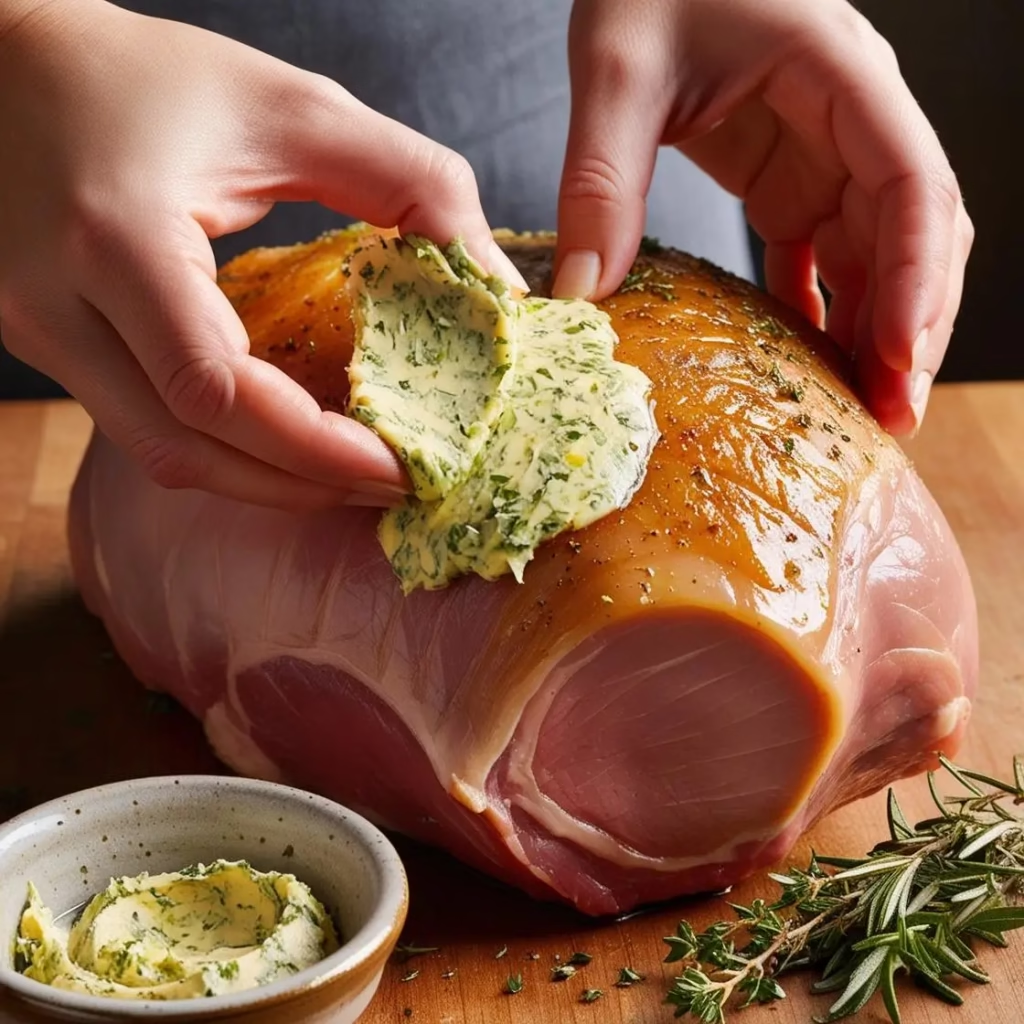
How to Cook a Bottom Round Roast
Follow these steps for perfect results:
- Prepare the roast: Remove your beef bottom round roast from the refrigerator 1-2 hours before cooking to allow it to come to room temperature. This ensures even cooking throughout. Pat the meat thoroughly dry with paper towels to promote better browning.
- Create the herb butter: In a small bowl, combine the softened butter, minced garlic, chopped rosemary, thyme leaves, Dijon mustard, salt, and pepper until well incorporated.
- Season the meat: Rub the herb butter mixture all over the roast, ensuring every surface is coated. If your roast isn’t already tied, use kitchen twine to tie it at 1-inch intervals to help it maintain its shape during cooking.
- Preheat and prepare: Position your oven rack in the lower-middle position and preheat to 450°F (232°C). Place a roasting rack inside a roasting pan.
- Sear the roast: Heat olive oil in a large skillet over medium-high heat. Once hot, sear the roast on all sides until deeply browned, about 3-4 minutes per side. Transfer the seared roast to the prepared roasting rack.
- Roast with precision: Place the roast in the preheated oven and cook at 450°F for 15 minutes to develop a flavorful crust. Then reduce the oven temperature to 325°F (163°C) and continue roasting until the internal temperature reaches your desired doneness:
- Medium-rare: 135°F (57°C), approximately 1 hour 15 minutes total cooking time
- Medium: 145°F (63°C), approximately 1 hour 25 minutes total cooking time
- Medium-well: 150°F (66°C), approximately 1 hour 35 minutes total cooking time
Serving
- Rest properly: The most crucial step! Remove the roast from the oven and transfer to a cutting board. Tent loosely with aluminum foil and let rest for at least 20-30 minutes before slicing. This allows the juices to redistribute throughout the meat.
- Slice against the grain: Use a sharp knife to cut thin slices against the grain for maximum tenderness.
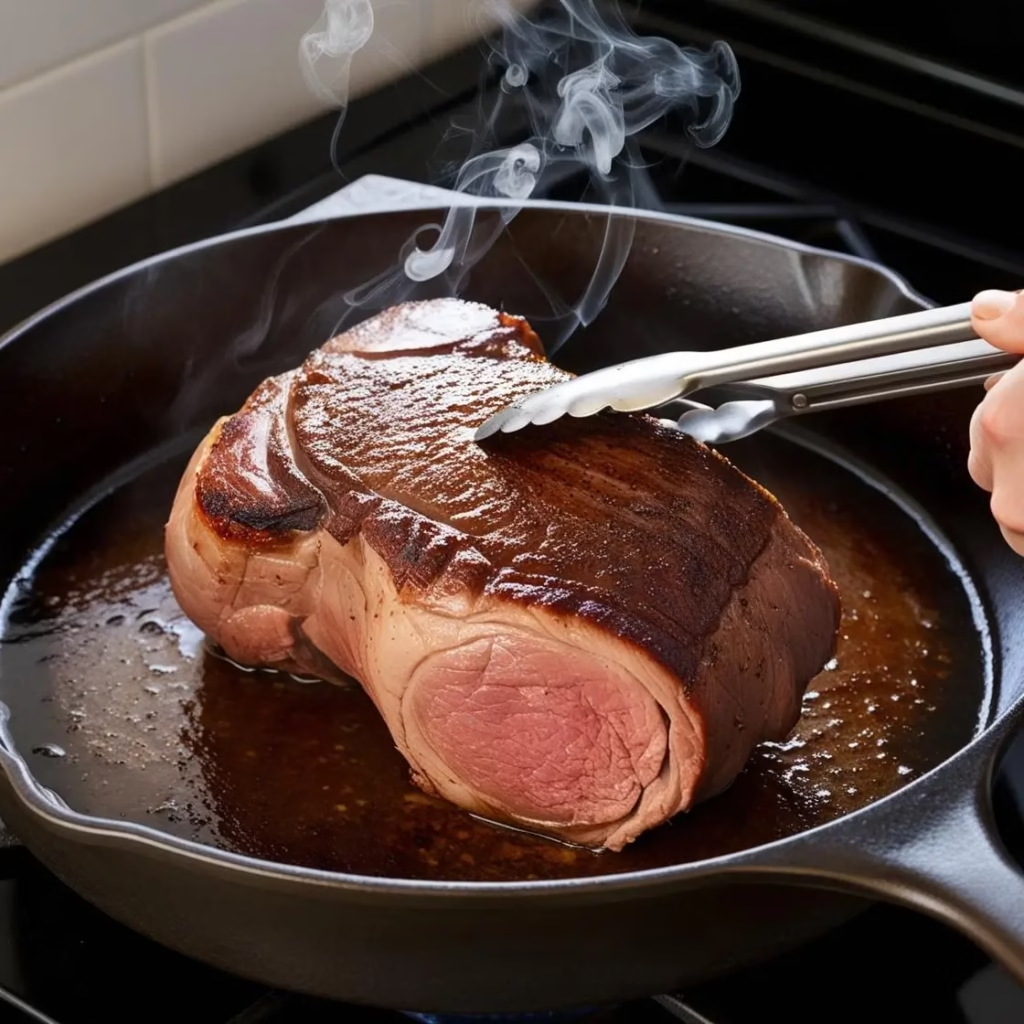
Expert Tips for Perfecting Your Bottom Round Roast Recipe
After years of refining this recipe, here are some professional insights to elevate your results:
The resting period is non-negotiable: This might be the single most important factor in achieving a juicy roast. During resting, the meat’s internal temperature will continue to rise slightly (about 5°F), and the muscle fibers relax, reabsorbing the flavorful juices. Skip this step, and you’ll lose those precious juices to your cutting board.
Room temperature matters: Starting with room-temperature meat promotes even cooking from edge to center. Cold meat directly from the refrigerator often results in overcooked exterior and undercooked interior.
Pat it dry thoroughly: Moisture is the enemy of good browning. Taking an extra minute to thoroughly dry the surface of your bottom round roast will dramatically improve your sear, creating deeper flavor and better texture.
Customize your seasoning: While this herb butter mixture is our go-to, don’t be afraid to experiment with different flavor profiles. A coffee-peppercorn rub or Mediterranean herb blend can transform this same cut into an entirely different experience.
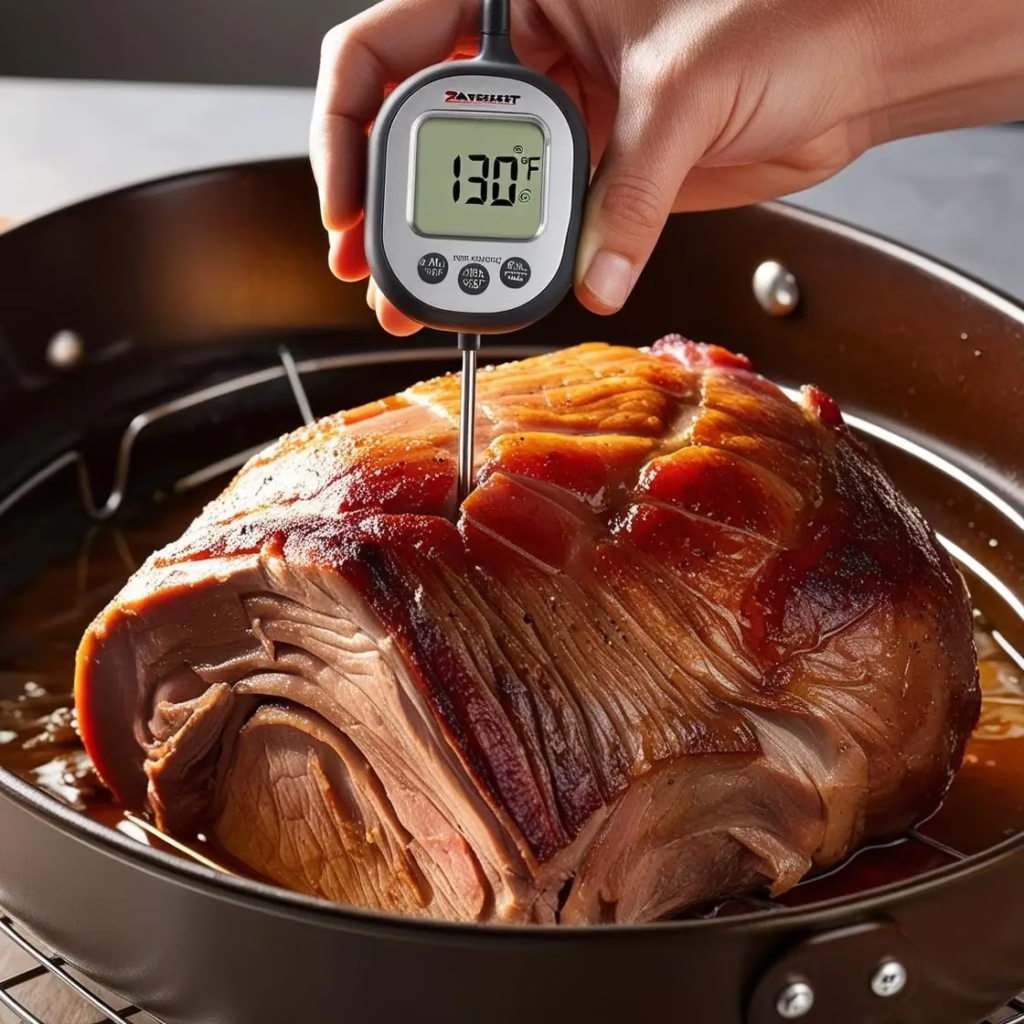
Storage Instructions
This bottom round roast recipe often yields delicious leftovers that can be repurposed throughout the week:
Refrigeration: Store cooled leftover roast in an airtight container for up to 4 days.
Freezing: For longer storage, wrap individual portions tightly in plastic wrap, then aluminum foil, and freeze for up to 3 months.
Thawing and reheating: Thaw frozen roast overnight in the refrigerator. To prevent drying out during reheating, add a splash of beef broth to the meat and warm gently in a covered pan over low heat or in the microwave at 50% power.
Frequently Asked Questions
What side dishes pair well with this bottom round roast recipe?
This versatile centerpiece pairs beautifully with garlic mashed potatoes, roasted Brussels sprouts, glazed carrots, or a simple green salad. For a complete Sunday dinner experience, don’t forget Yorkshire puddings or fluffy dinner rolls to soak up the delicious juices.
Can I use a different cut if I can’t find bottom round roast?
Yes! Chuck roast or round rump roast make excellent substitutes, though cooking times may vary slightly. Chuck roast contains more marbling, so it may require less attention to achieve tenderness.
What if I don’t have a roasting rack?
No roasting rack? Create an improvised one by arranging thick slices of onions, carrots, and celery on the bottom of your roasting pan, then place the meat on top. This vegetable « rack » will add flavor to any drippings, perfect for making gravy later.
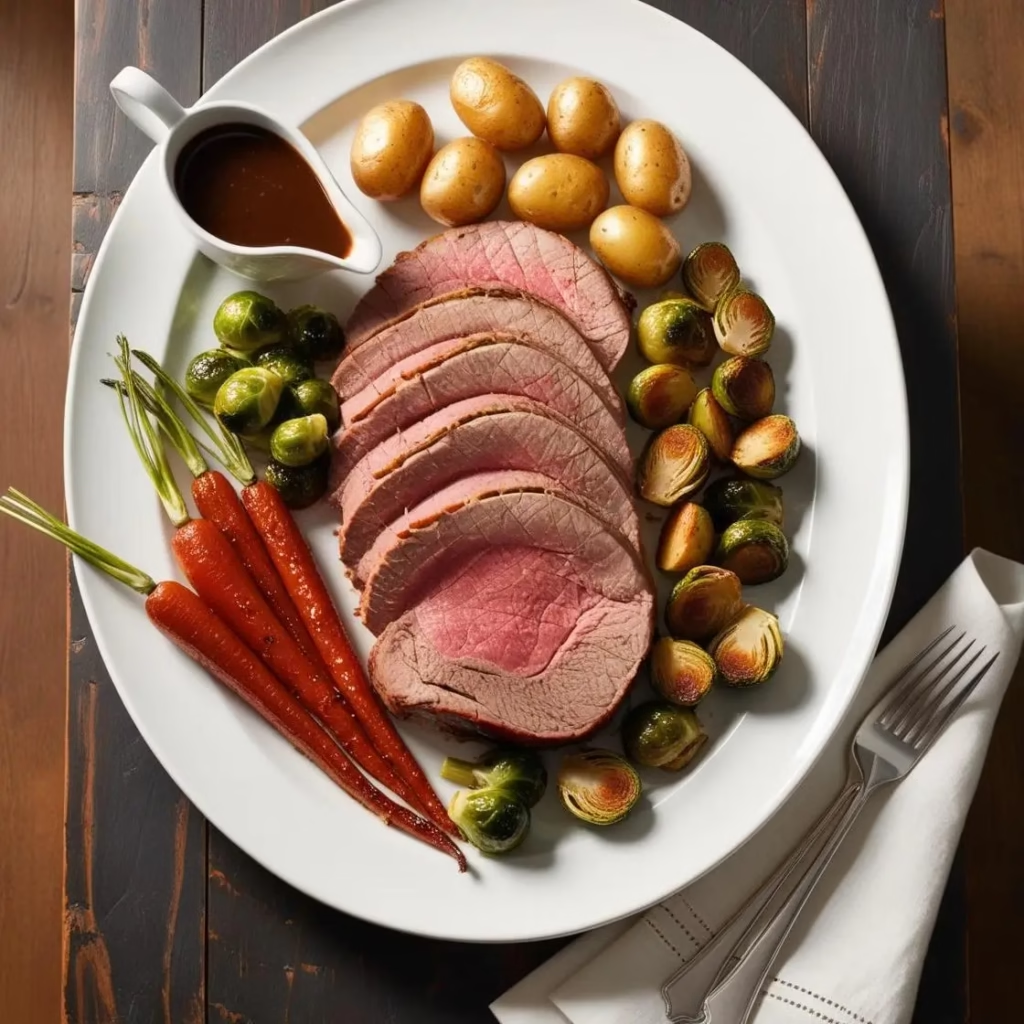
Nutrition Information (per serving, based on 8 servings)
- Calories: 327
- Total Fat: 19g
- Saturated Fat: 8g
- Trans Fat: 0g
- Cholesterol: 112mg
- Sodium: 651mg
- Total Carbohydrates: 1g
- Dietary Fiber: 0g
- Sugars: 0g
- Protein: 38g
Nutrition values are estimates only. Variations may occur due to product availability and preparation methods.

Other Impressive Beef Recipes
If you enjoy this bottom round roast recipe, you might also appreciate these other beef classics:
- Slow-Cooked Beef Brisket with Coffee Rub
- Beef Liver
- Beef Tips and Gravy (Slow Cooker Recipe)
- Vietnamese Shaking Beef
- Beef and Noodles
Each recipe transforms affordable cuts into memorable meals using techniques similar to those in this bottom round roast recipe.
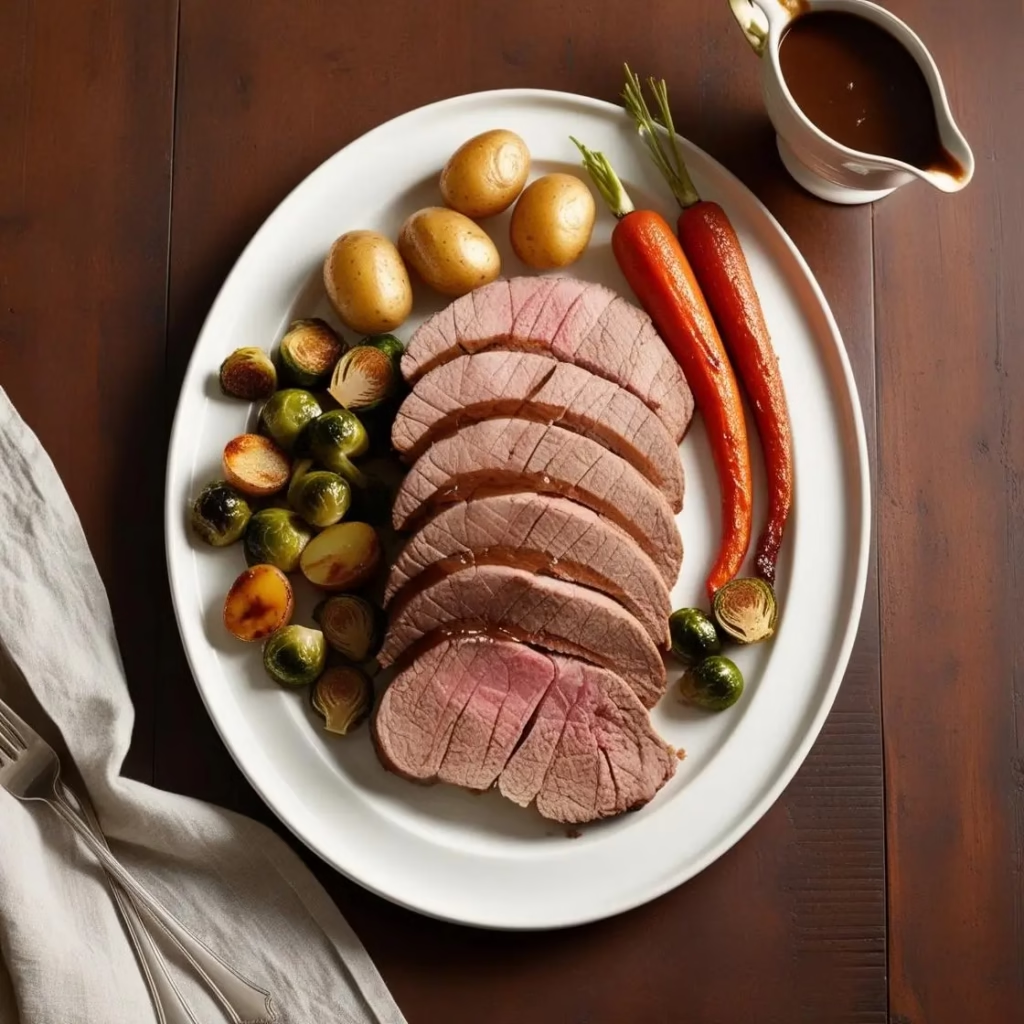
In conclusion, this bottom round roast recipe stands as a testament to the fact that spectacular meals don’t require expensive ingredients or complicated techniques. Above all, what makes this approach special is how it honors the inherent qualities of the beef bottom round roast while addressing its challenges. Consequently, you end up with a dish that tastes far more luxurious than its price tag would suggest.
Additionally, the versatility of this recipe cannot be overstated. For instance, leftover slices make incredible sandwiches the next day, or can be repurposed into quick stir-fries and hearty salads. Moreover, once you’ve mastered the basic technique, you can experiment with different herb and spice combinations to create countless variations of this dish.
Ultimately, cooking a perfect bottom round roast is about understanding the balance between time, temperature, and technique. As a result of following this method, you’ll gain confidence in handling larger cuts of meat and, subsequently, expand your culinary repertoire. Therefore, the next time you’re at the meat counter and spot an affordable beef bottom round roast, remember that with this recipe in your arsenal, you’re just a few hours away from an impressive meal that will have everyone asking for seconds.
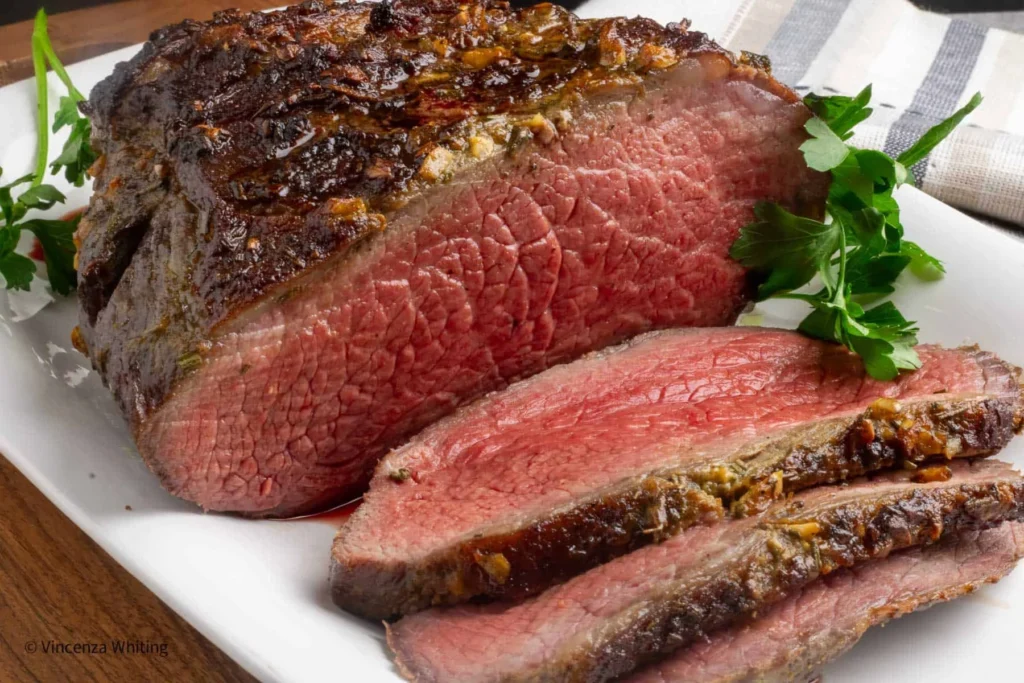
The Perfect Bottom Round Roast Recipe: Tender, Juicy and Economical
Description
Transform an economical beef bottom round roast into a tender, juicy masterpiece with this foolproof recipe. Simple ingredients and expert techniques combine to create a restaurant-quality roast that’s perfect for Sunday dinner or special occasions.
Ingredients
Instructions
- Remove the beef bottom round roast from refrigeration 1-2 hours before cooking to bring to room temperature.
- Preheat oven to 450°F (232°C). Position rack in lower-middle of oven.
- Pat the roast completely dry with paper towels.
- In a small bowl, combine softened butter, minced garlic, chopped rosemary, thyme leaves, Dijon mustard, salt, and pepper, mixing until well incorporated.
- Rub the herb butter mixture evenly over all surfaces of the roast.
- If not already tied, use kitchen twine to tie the roast at 1-inch intervals.
- Heat olive oil in a large skillet over medium-high heat until shimmering.
- Sear the roast on all sides until deeply browned, approximately 3-4 minutes per side.
- Transfer the seared roast to a roasting rack set inside a roasting pan.
- Roast at 450°F for 15 minutes to develop a crust.
- Reduce oven temperature to 325°F (163°C) and continue roasting until internal temperature reaches desired doneness:
- Medium-rare: 135°F (57°C), approximately 1 hour total
- Medium: 145°F (63°C), approximately 1 hour 10 minutes total
- Medium-well: 150°F (66°C), approximately 1 hour 20 minutes total
- Remove from oven and transfer to a cutting board. Tent loosely with aluminum foil.
- Allow roast to rest for 20-30 minutes before slicing (internal temperature will rise about 5°F during rest).
- Slice thinly against the grain and serve.
Notes
- Refrigerate: Store in an airtight container for up to 4 days.
Freeze: Wrap individual portions tightly and freeze for up to 3 months.
Reheat: For best results, reheat slices in a covered pan with a splash of beef broth over low heat until just warmed through.

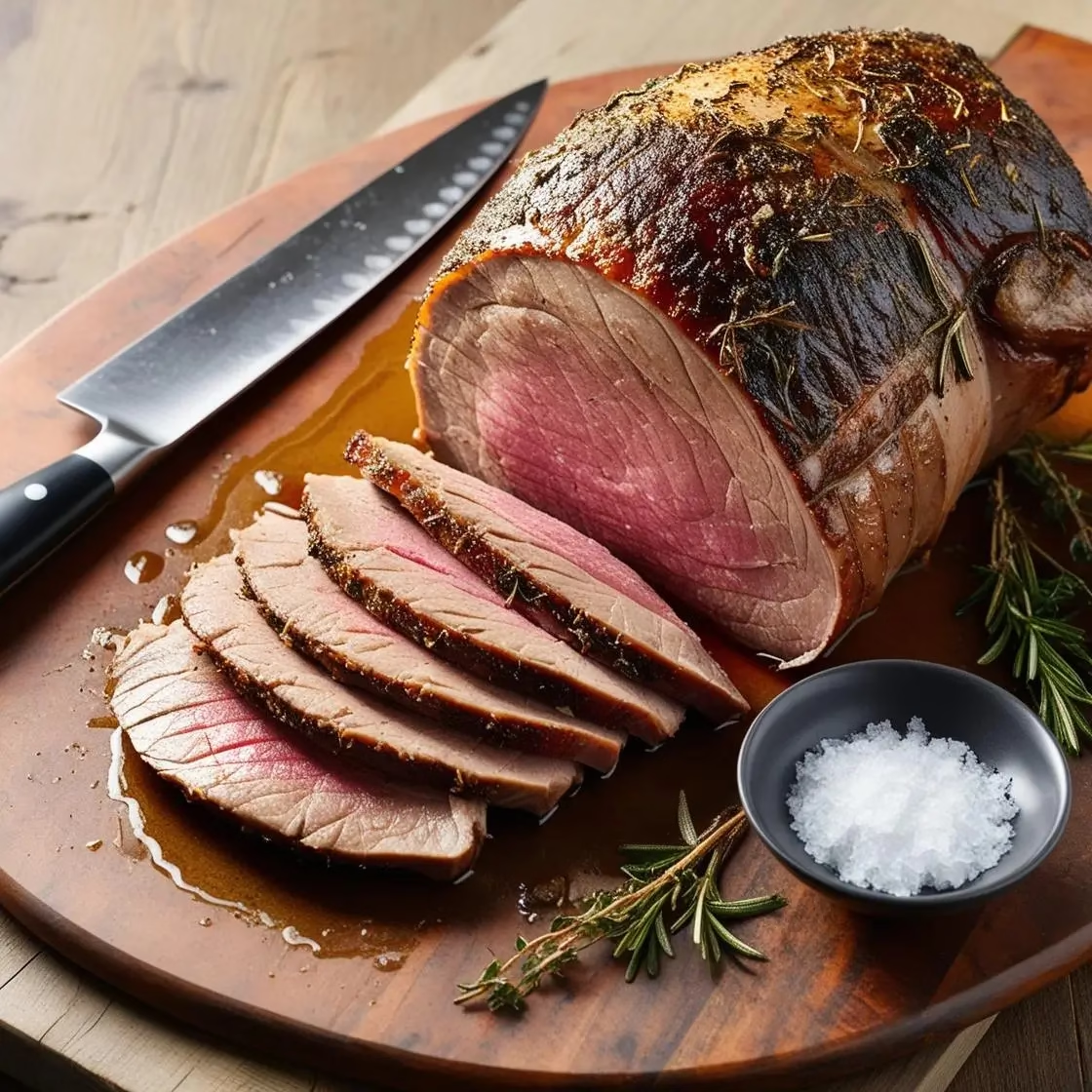
juin 5, 2025 at 11:18 am[…] Bottom Round Roast […]